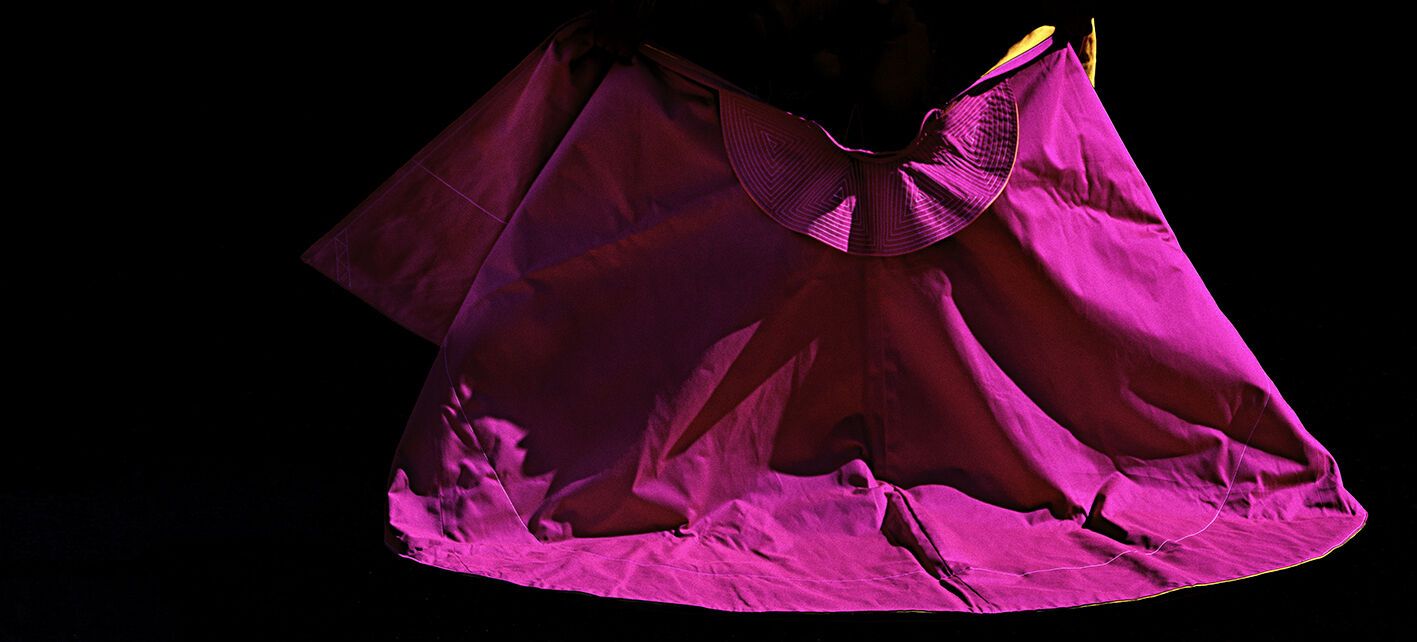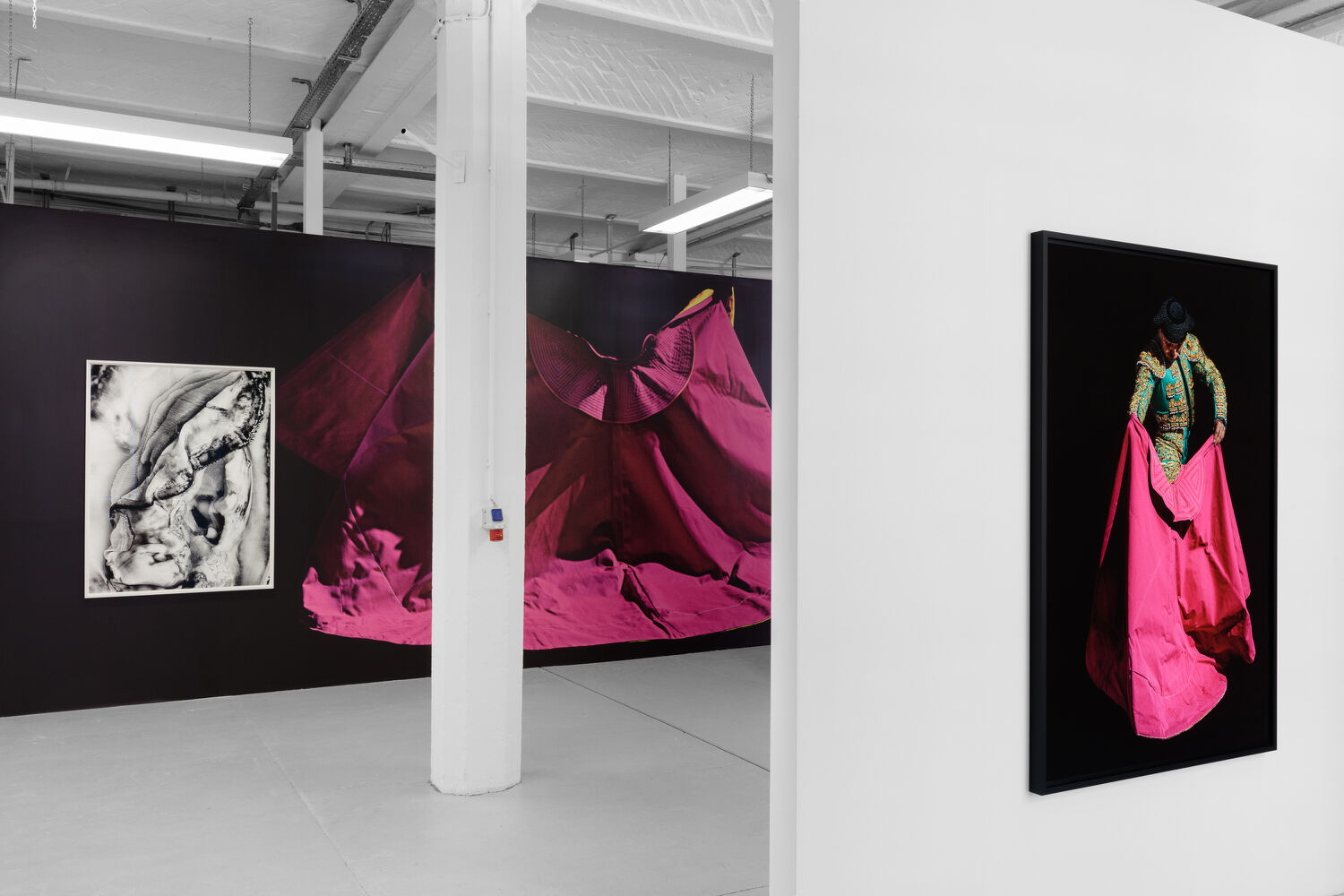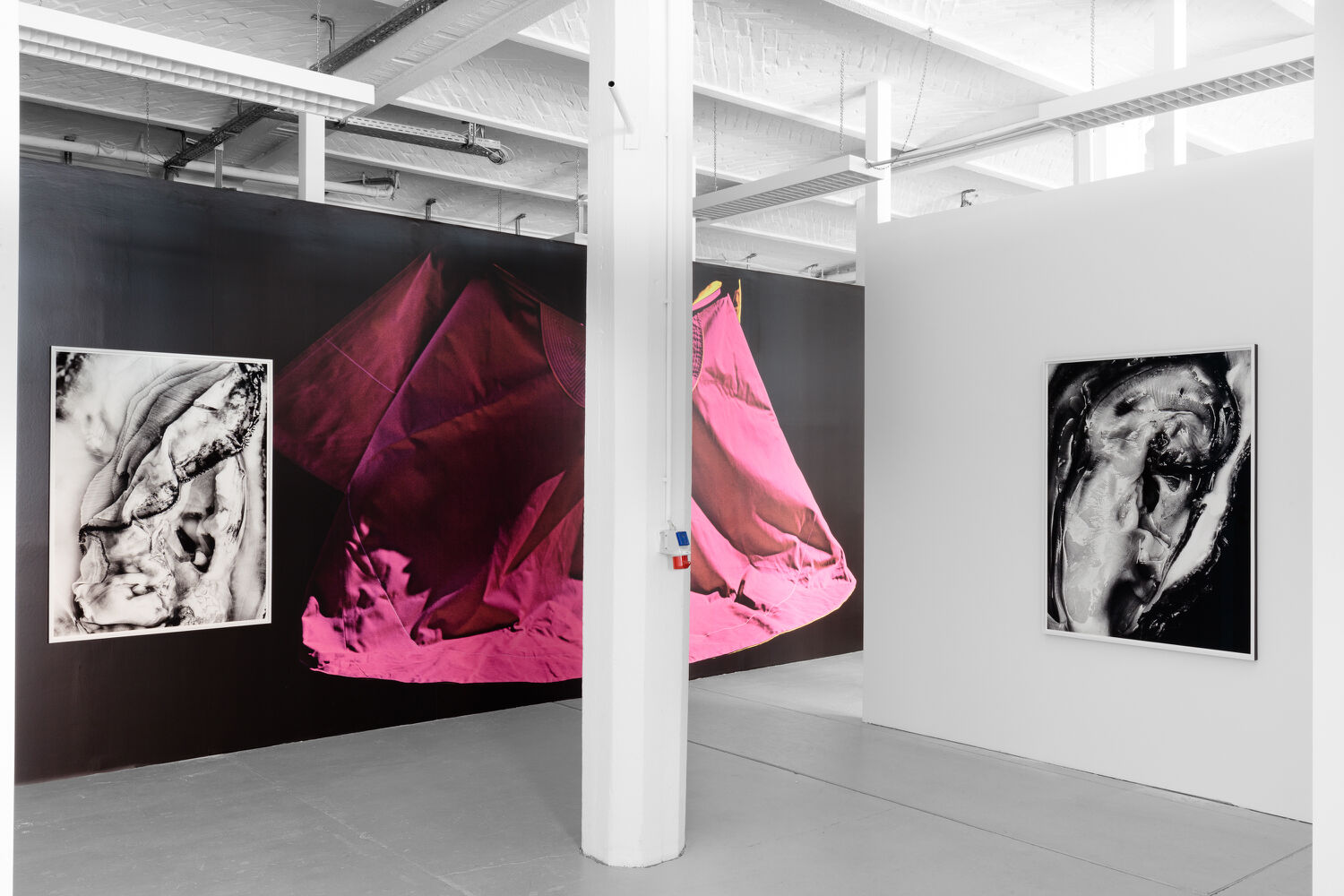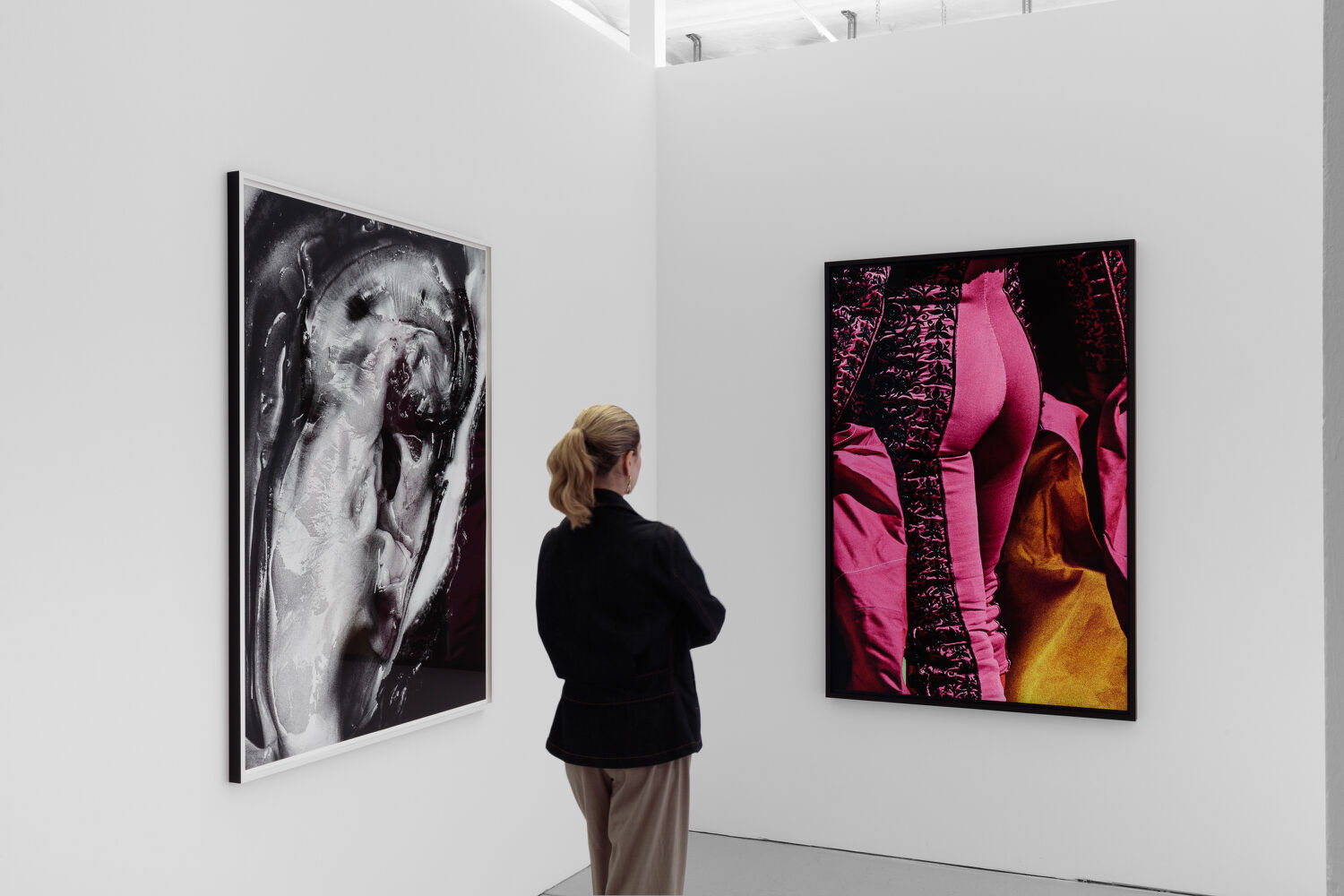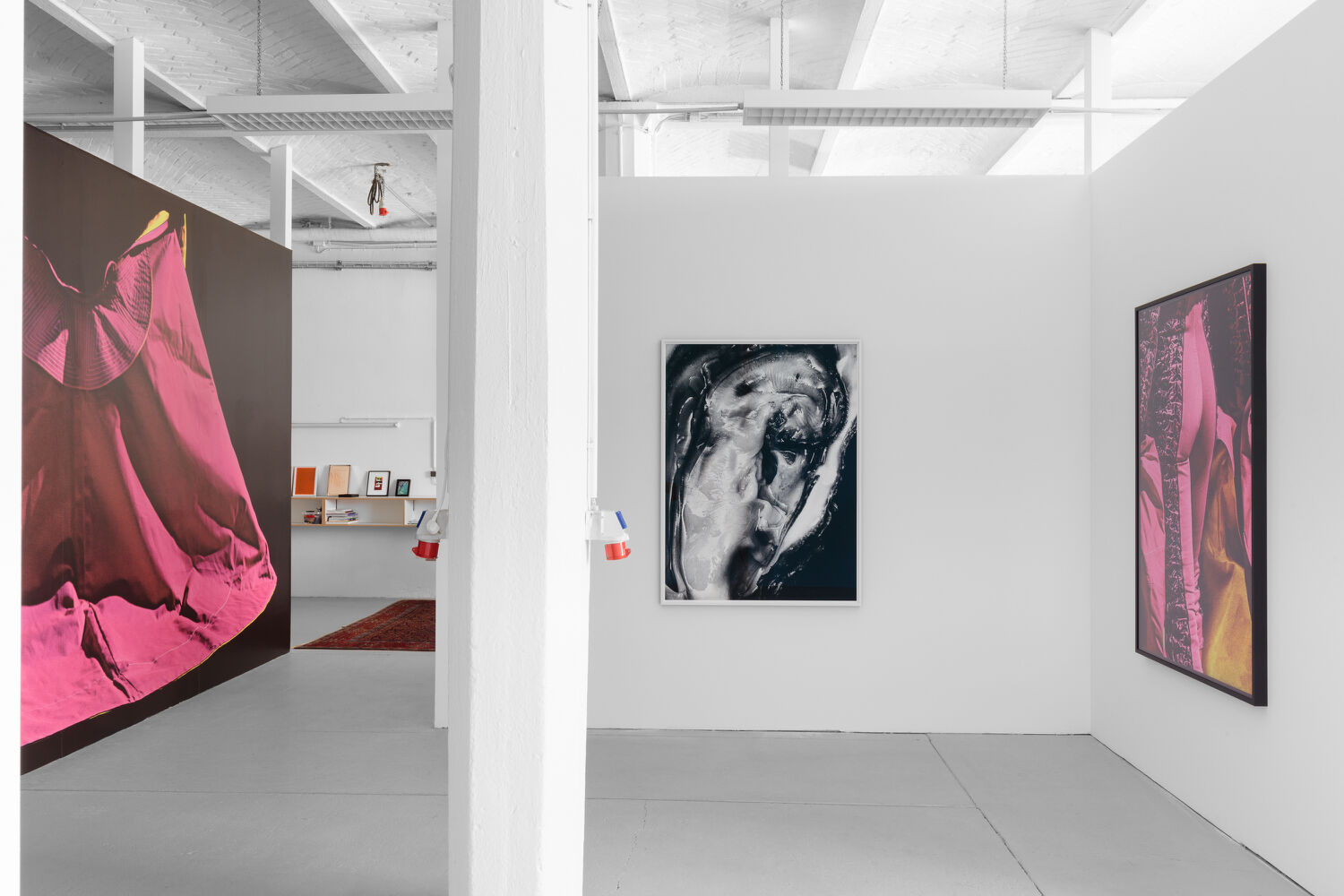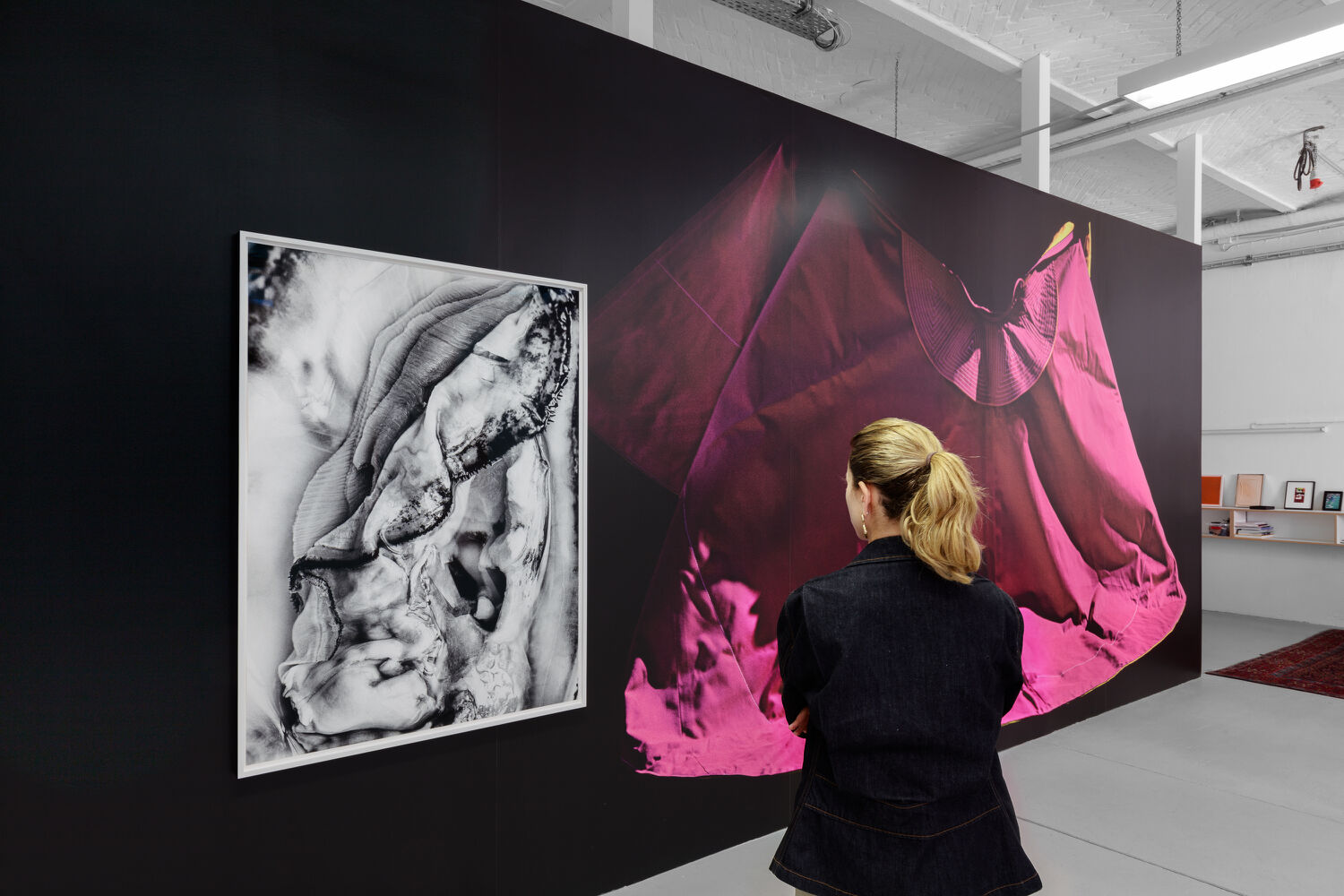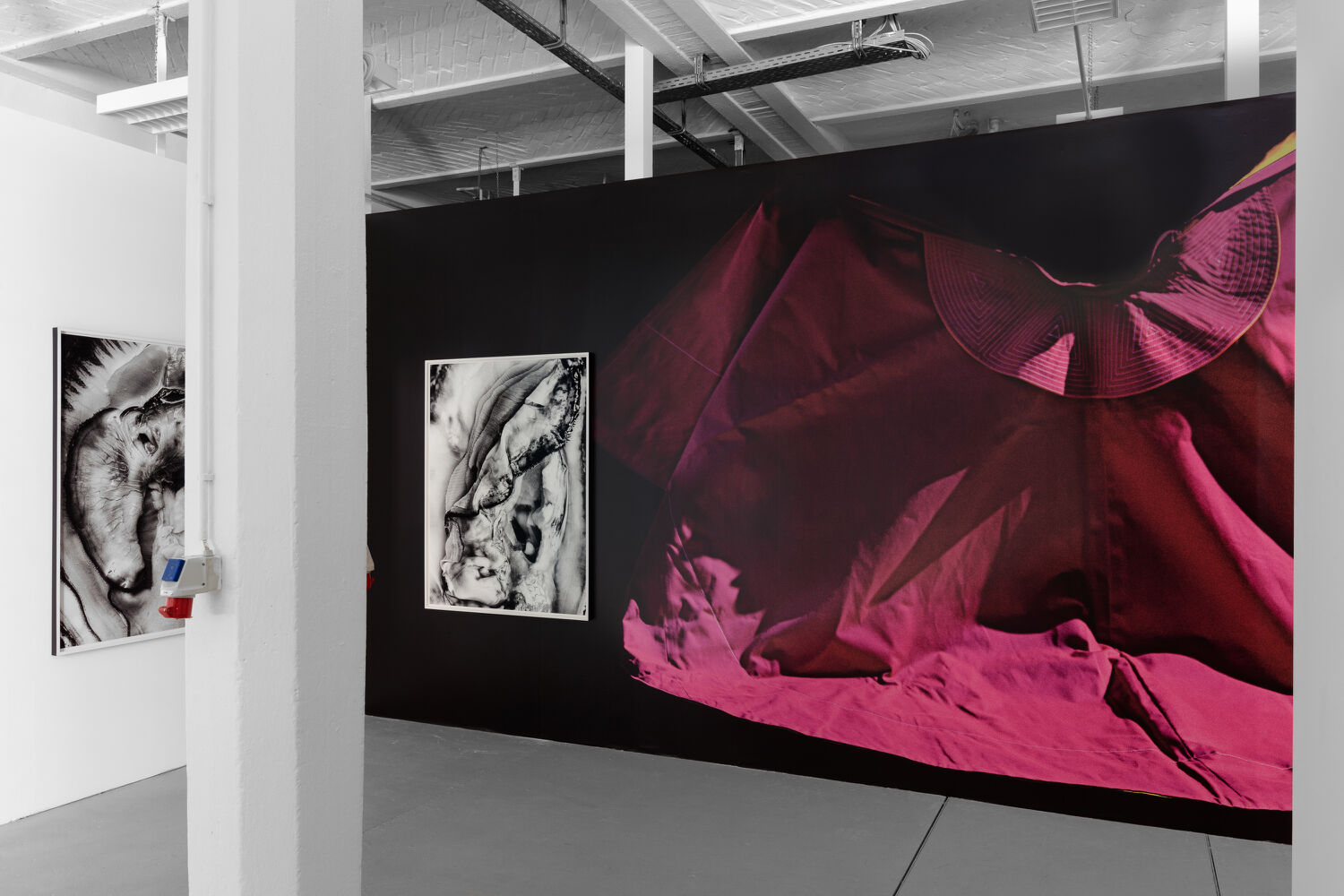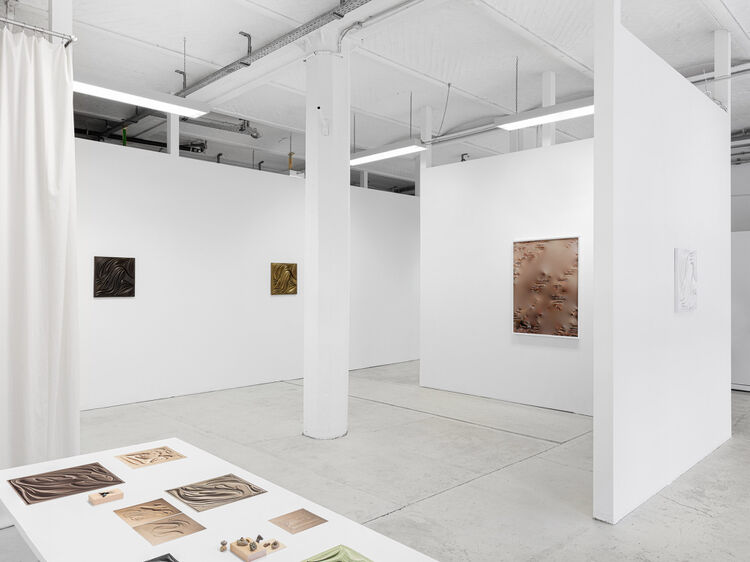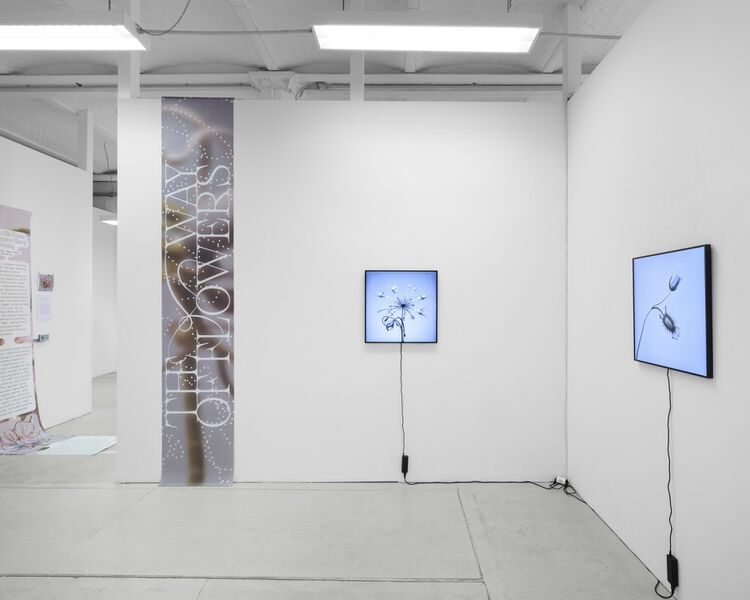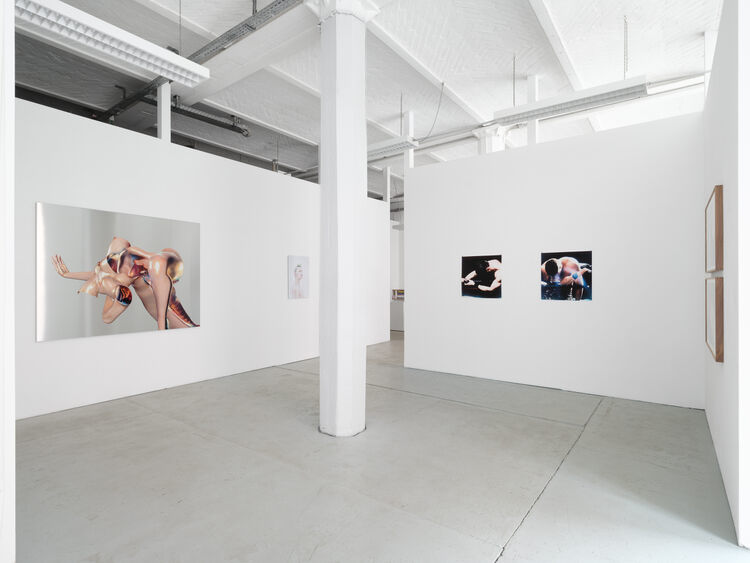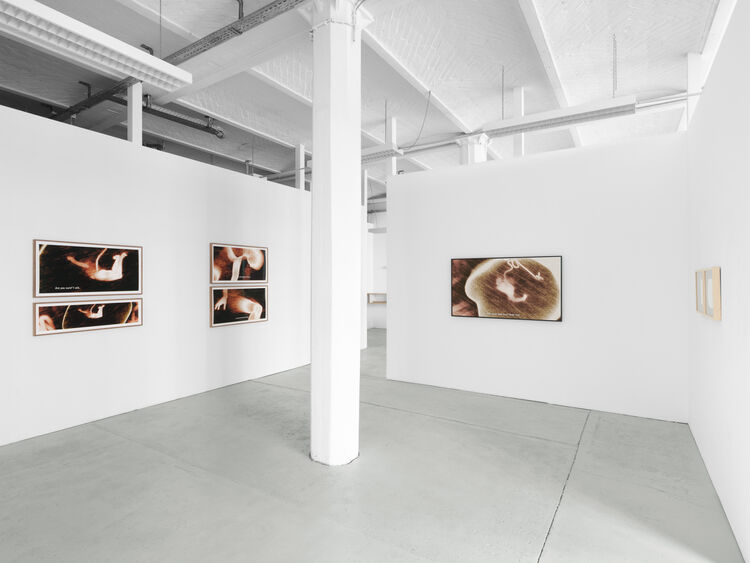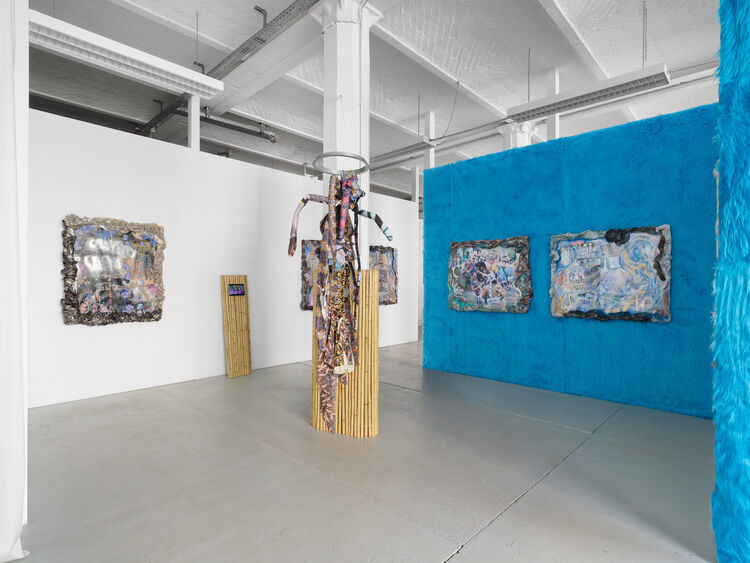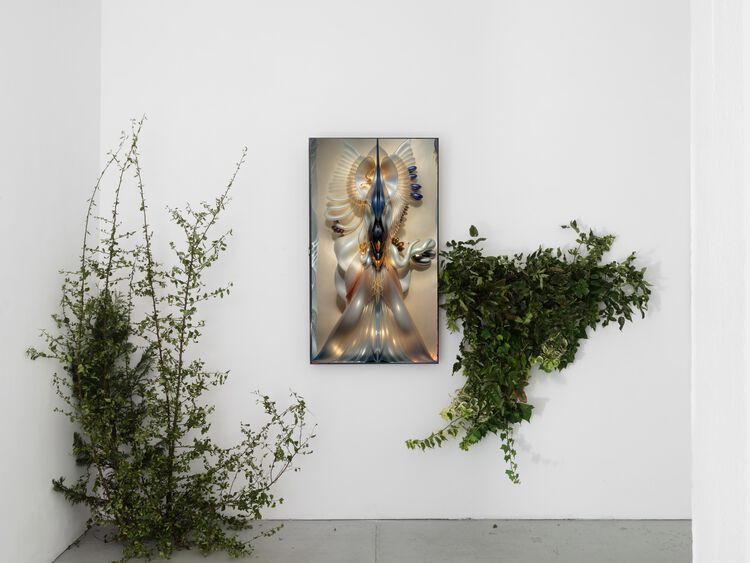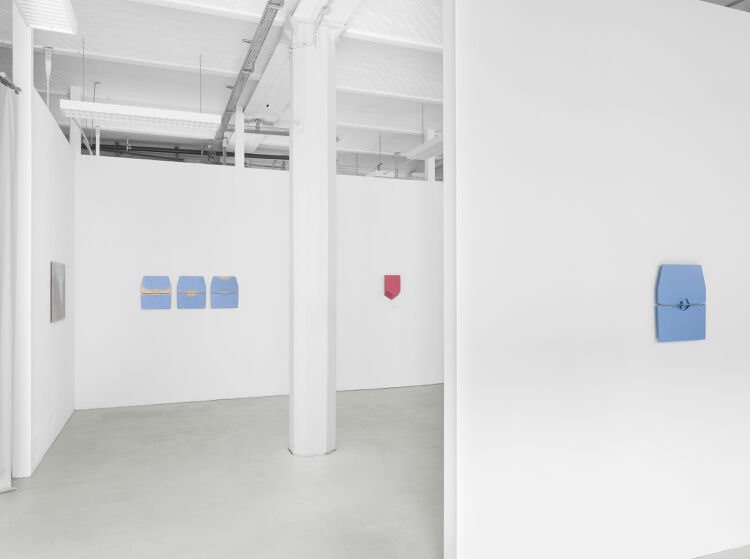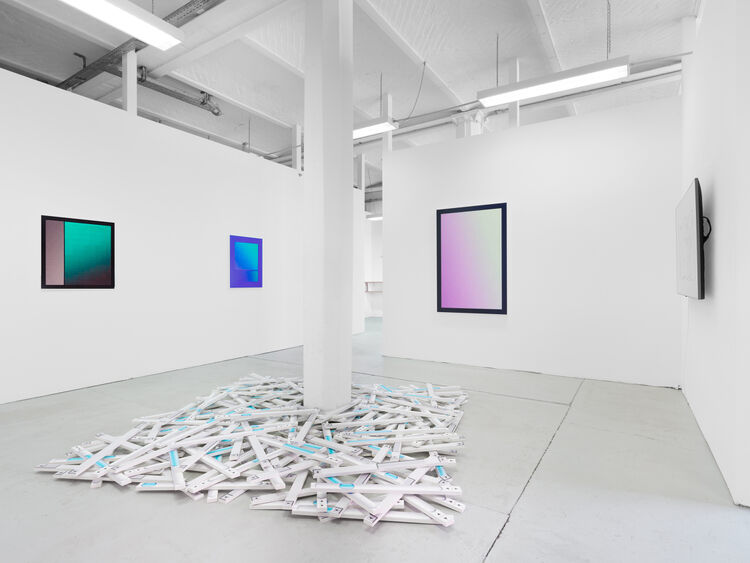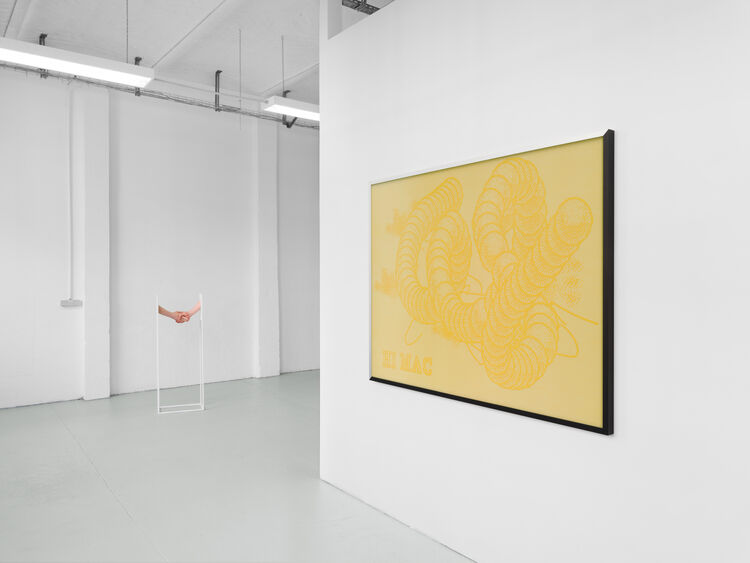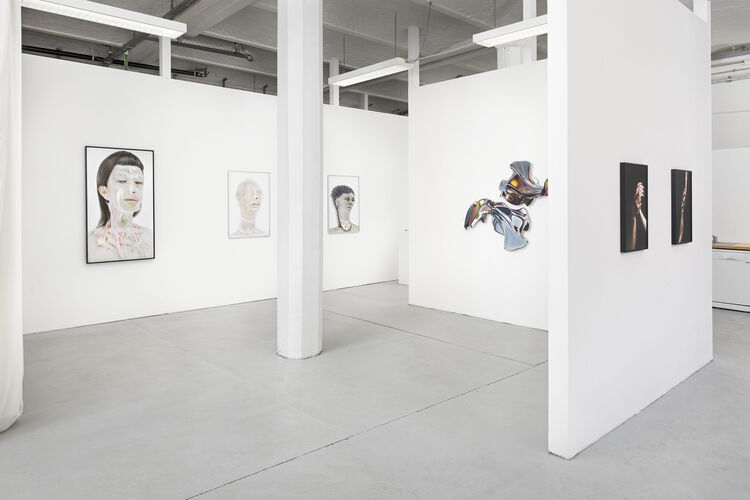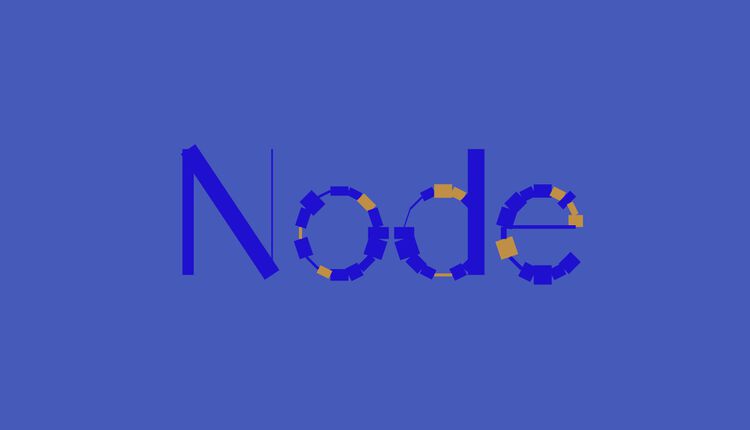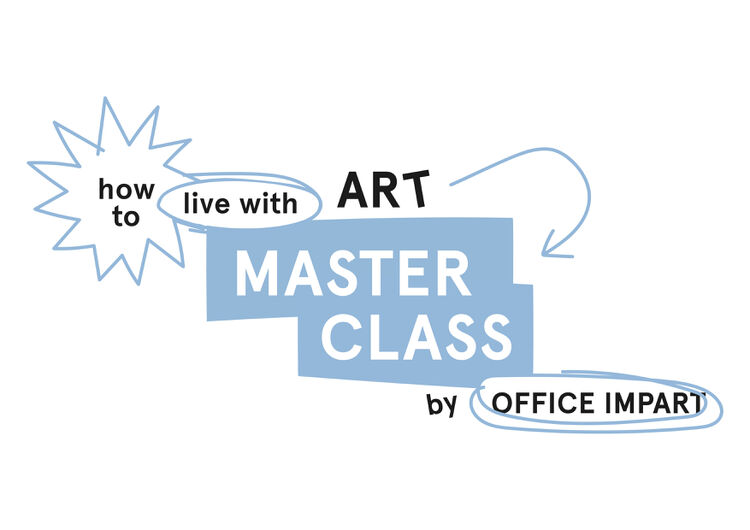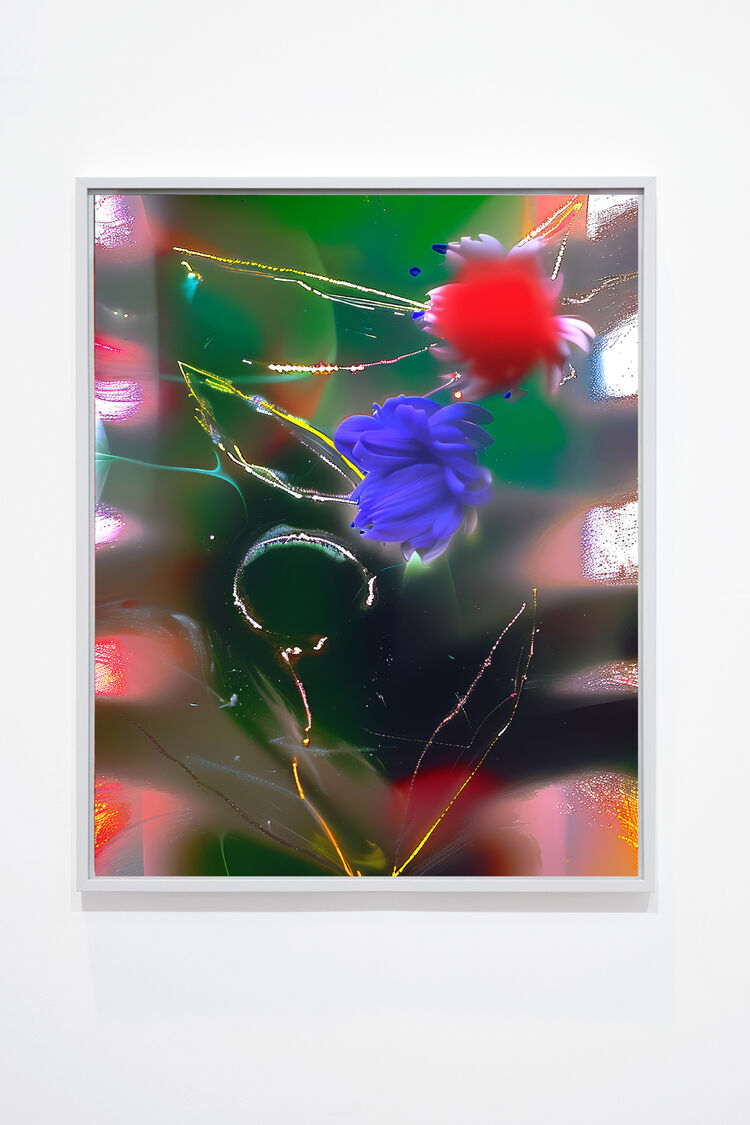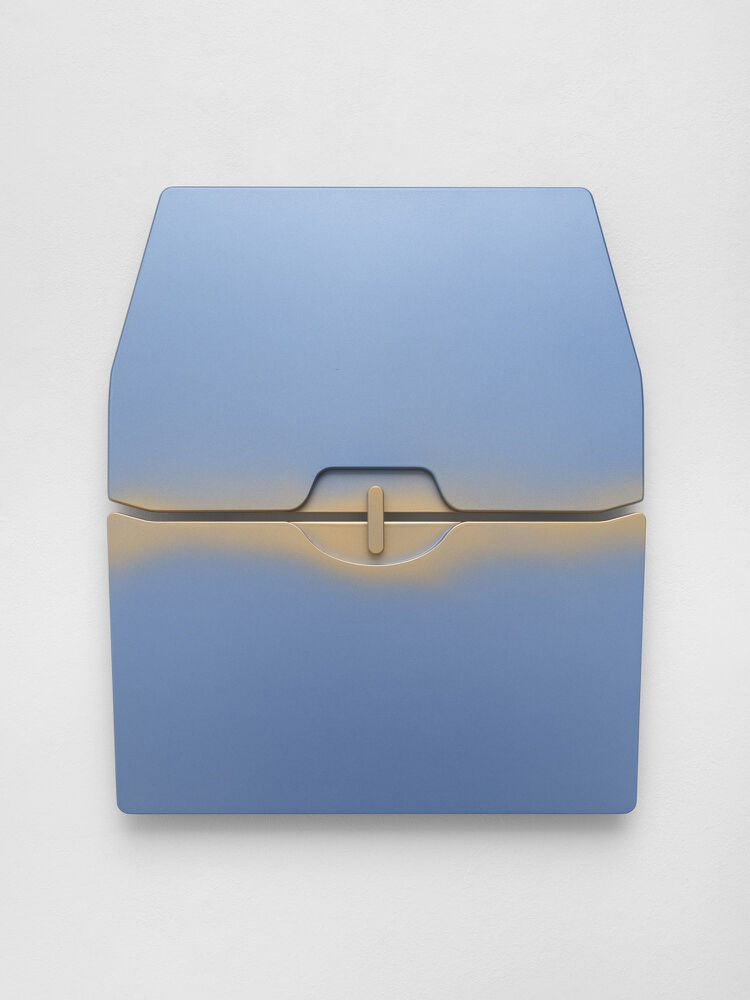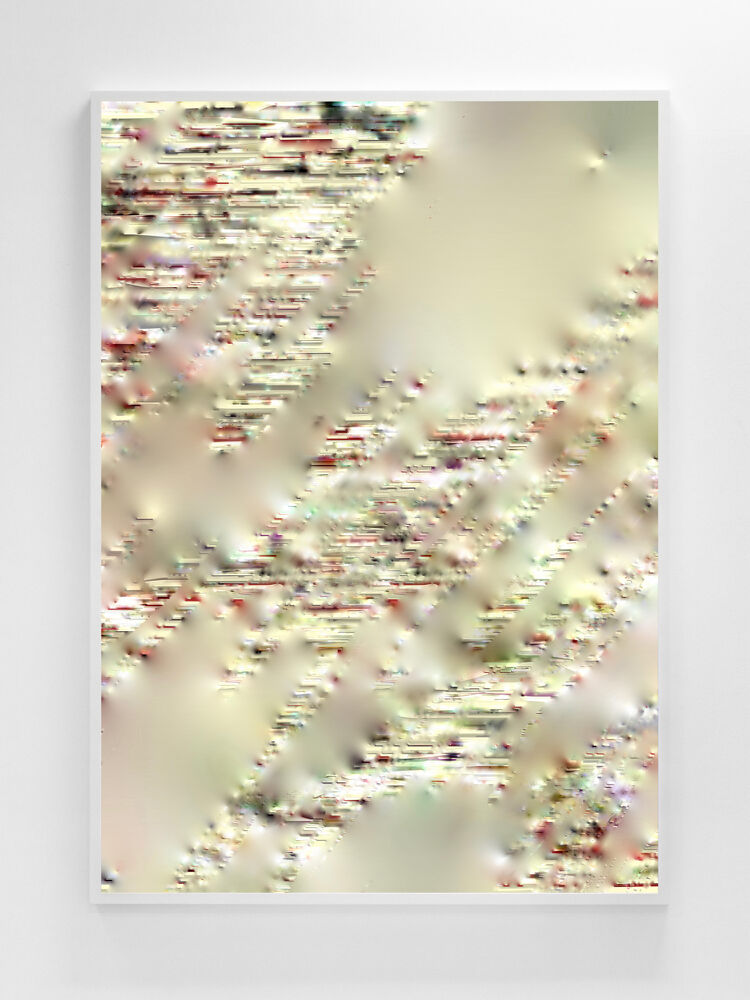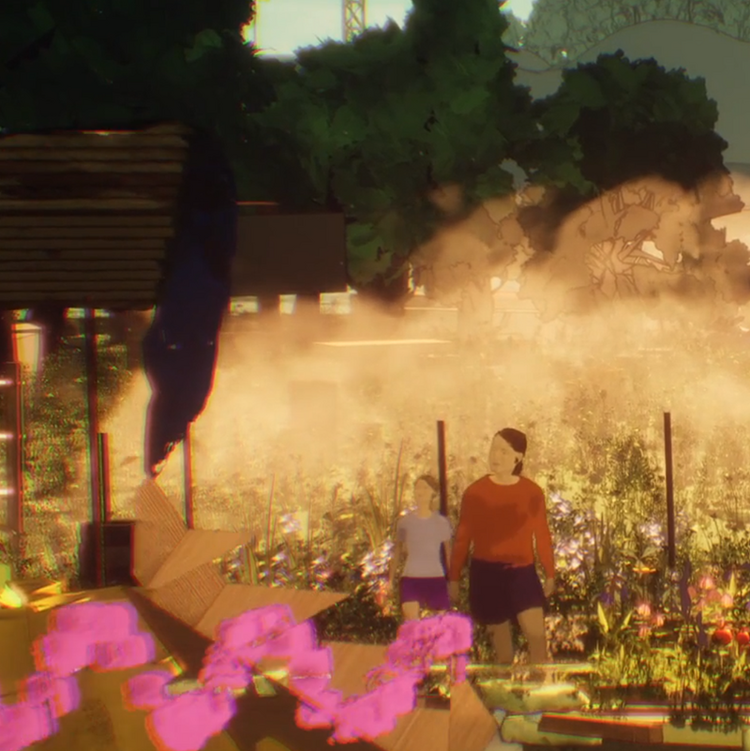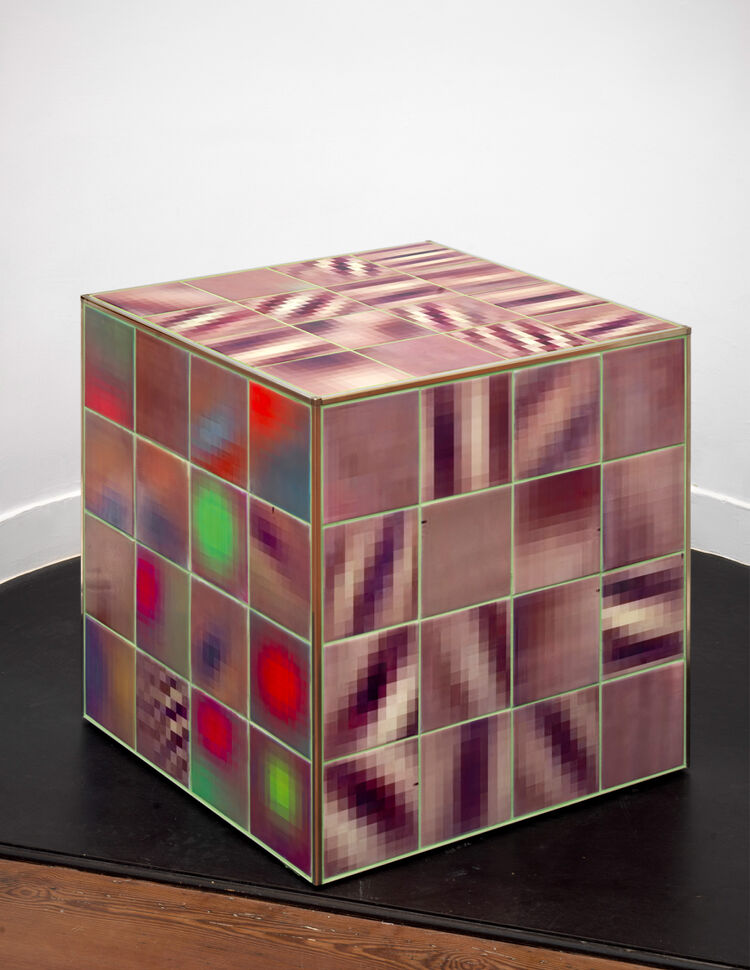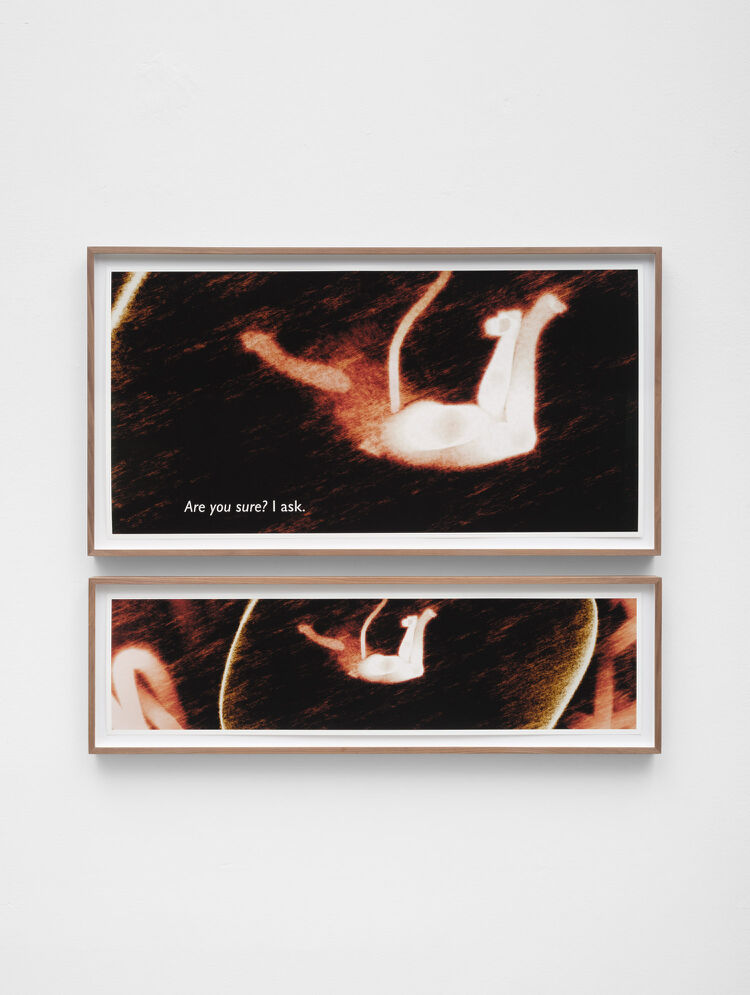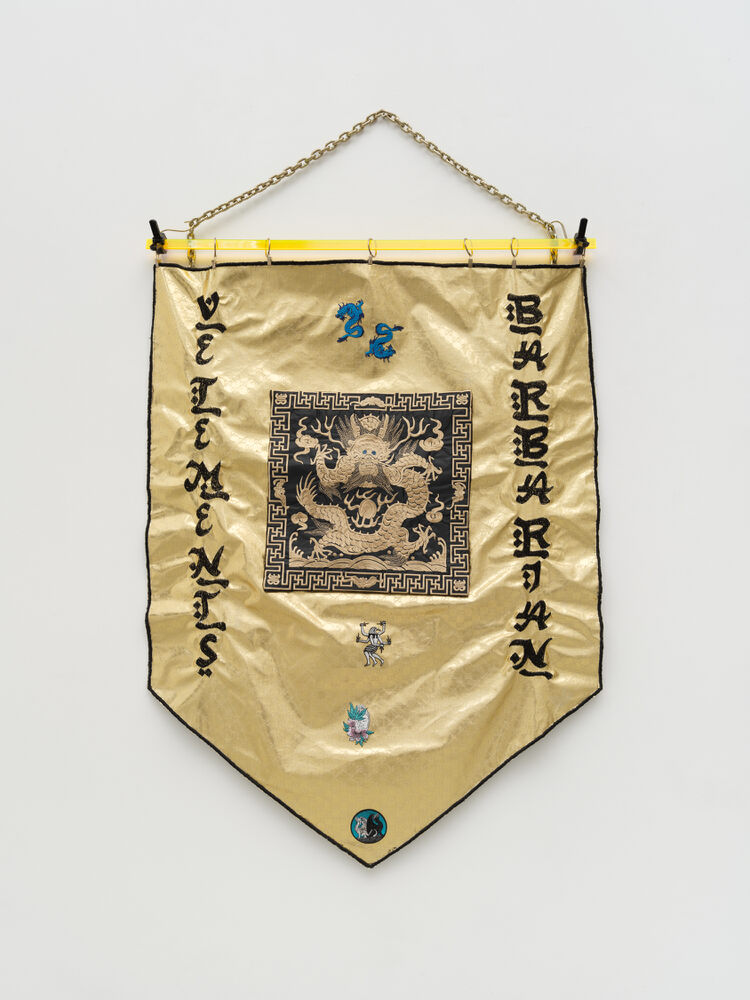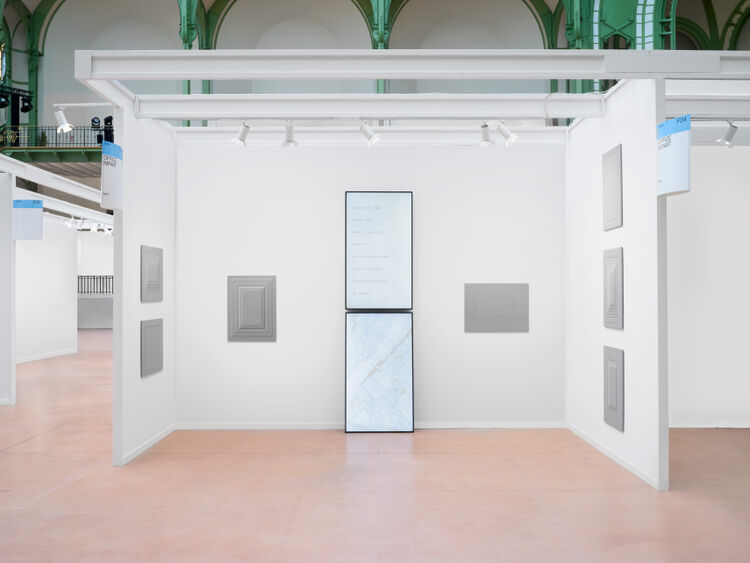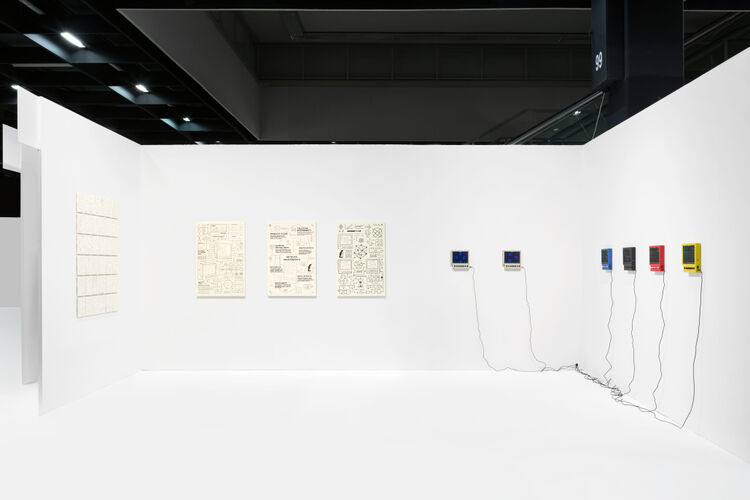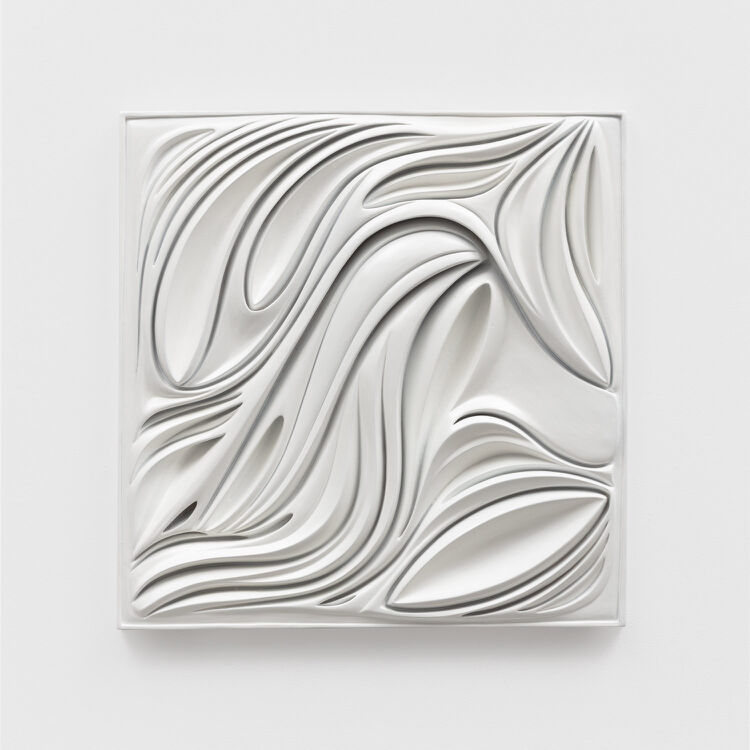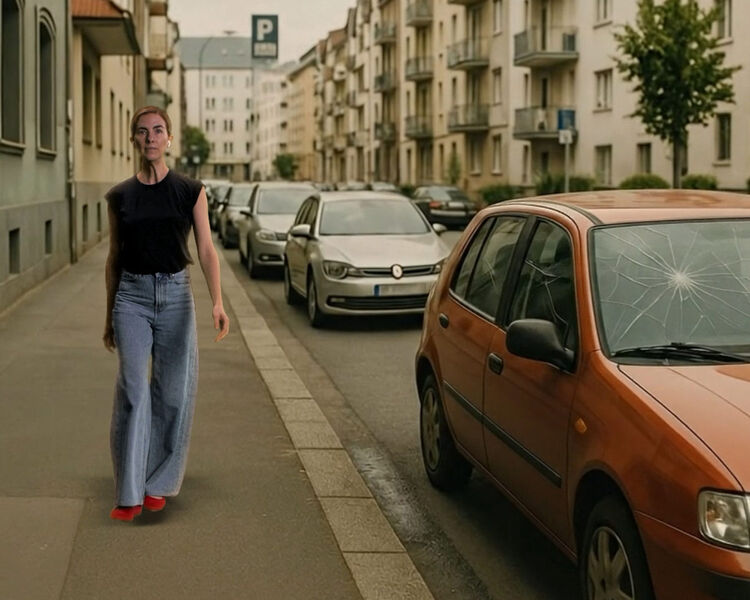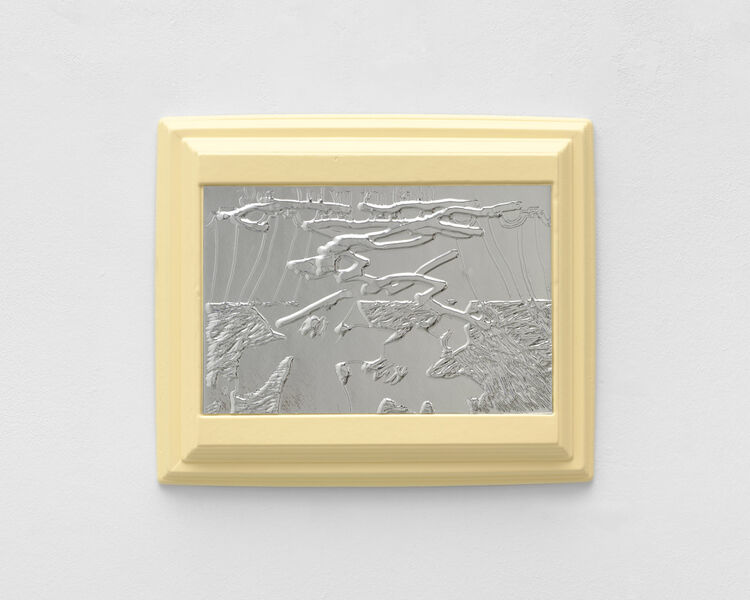Pola Sieverding 'VABANQUE'
POLA SIEVERDING
'VABANQUE'
solo show
10. Juni – 16. July 2022
Mi – Fri 15 – 18 Uhr, Terminbuchung hier
Open Saturday: 16. Juli, 12–18 Uhr
Mit ihrer Ausstellung Vabanque kombiniert Pola Sieverding zwei Sphären kultureller Praktiken, die auf den ersten Blick wenig miteinander gemein haben: die Kulinarik und den Stierkampf. Signifikante fotografische Aufnahmen eines Toreros, seines Tuchs, der Capa und einer anfangs nur unbestimmt definierbaren organischen Substanz werden innerhalb der Kabinett-artigen Ausstellung miteinander in Beziehung gesetzt. Von Raum zu Raum und Wand zu Wand entstehen Relationen zwischen den Motiven, die anfangs rätselhaft erscheinen, teils verbunden mit der Unklarheit über ihre Größenverhältnisse und Maßstäblichkeit.
Bei den drei als „Hermaphrodite“ betitelten Schwarzweiß-Pigmentdrucken mag der erste Eindruck an einen anatomischen Schnitt durch Innenorgane eines Lebewesens denken lassen, die zugleich optisch die Charakteristik einer Landschaftsaufnahme aufweisen. Ihre Bezeichnung verweist indirekt auf das dargestellte Motiv, den zweigeschlechtlich lebenden Austern, die hier ihrer schützenden Schale entledigt und bereit für den Genuss sind.
So treffen augenscheinlich zwei gegensätzliche Aspekte von Sexualität aufeinander, die inszenierte Hyper-Maskulinität der Corrida auf der einen, mit der Mischform des Zwitters auf der anderen Seite. Mit ihnen assoziiert ist in beiden Fällen die Idee der Potenz, die dem Ruf nach durch das Essen der Muscheln gesteigert und im Fall des Stierkampfs veranschaulicht wird. Und sowohl die Speise wie der Kampf sind existenziell konnotiert, es geht – so oder so – um Leben und Tod.
Für die Auster und den Torero, samt seiner Mitstreiter, geht es um alles, in einer Art grundsätzlichen Grenzerfahrung, die gegebenenfalls den hier nicht sichtbaren Stier mit einbezieht. Zudem stehen beide an sich schon rituellen Akte, die der Einverleibung eines Aphrodisiakums und die des aufwendig orchestrierten und ausgestatteten Kampfs in der Arena, für Formen der Verschwendung, des Überflusses. Jenseits der Befriedigung unmittelbarer Bedürfnisse beginnt der Luxus kultureller und sozialer Praktiken, die dennoch im Feld der archaischen Prinzipien des Lebens gegründet sind. Vielleicht dann auch wieder ein symbolischer Speicher in Zeiten der Not?
Pola Sieverding dokumentiert diese Akte, die eine Form der Verdopplung dieser existenziellen Gegebenheiten sind. Akte, deren Formen ethische Fragestellungen aufwerfen, wo Zugang und Ausschluss der Möglichkeit von Teilhabe ostentativ in den Raum treten. Dies geschieht deskriptiv und dabei doch begabt mit einem Sinn für Einfühlung, mit dem die Körperlichkeit, zumindest als optisches Geschehen, erfasst wird. Hier schwingt in der Wirkung auch ein ästhetisches Phänomen mit ein, das im Spanischen „Duende“ genannt wird, die Beschwörung einer emotionalen Reaktion durch eine expressive Geste des Toreros und vergleichbar auch im Flamenco auftritt. Ihr kritischer Blick bleibt daher ikonophil und zeigt darin eine eigene Form maximaler Risikobereitschaft der Künstlerin in ihrem anthropologischen Projekt, in der ein magisches Wirkungsmoment erhalten bleibt. Der Raum der Interpretation wird durch kein letztes Urteil geschlossen, sondern bleibt offen für die Betrachtung und ihre Erwägung, auch in der Empfindung.
Sinnbild für diese Offenheit ist insbesondere das Tuch des Toreros, die Capa, die im Moment der Täuschung des Stiers der schützenden Muschelschale der Auster gleicht. Von der Künstlerin prominent und wandfüllend in den Raum gestellt treten wir mit in die Arena ein, um in oder hinter den Falten nach Illusionen und Realitäten zu fahnden.
Und folgende Frage ist mehr als nur eine Randnotiz: Ist der Protagonist, den Pola Sieverding 2022 in Arles fotografierte, wirklich ein Mann? Wieviel an Projektion steckt in der Identifikation? Eine Rückansicht lässt jede Ambivalenz hinsichtlich der biologischen und sozialen Geschlechtlichkeit zu. Wo liegen die Kipppunkte der Bestimmung, selbst innerhalb eines scheinbar eindeutigen Kontextes und Zeichensystems? Auch nur darüber nachzudenken, erfordert ganzen Einsatz.
Thomas W. Kuhn, Flingern im Juni 2022
In her exhibition VABANQUE, Pola Sieverding combines two spheres of cultural practices that, at first glance, have little in common: the culinary arts and bullfighting. Significant photographs of a torero, his cloth, the capa, and an initially only vaguely definable organic substance, are set in relation to each other within the cabinet-like exhibition. From room to room and wall to wall, relations emerge between the motifs, which at first may seem obscure, partly due to the uncertainty concerning their proportions and scale.
In the case of the three black-and-white pigment prints entitled „Hermaphrodite“, the first impression may suggest an anatomical section through the internal organs of a living being, which at the same time visually feature the characteristics of a landscape pictures.
Their title is an indirect reference to the depicted motifs, the bisexual oysters, which have here been stripped of their protective shells; ready to be indulged.
Thus, two opposing aspects of sexuality seem to meet, the staged hyper-masculinity of the corrida on the one hand, and the hybrid form of the hermaphrodite on the other. The idea of potency is associated with them in both cases, which according to reputation is enhanced by the consumption of oysters, and exemplified in the case of the bullfight. Both the food and the fight carry existential connotations; one way or another it is a matter of life and death.
For the oyster and the torero – and his companions – everything is at stake, in a kind of fundamental borderline experience that may possibly involve the bull, which is not visible here. Moreover, both ritual acts in themselves, the act of ingesting an aphrodisiac and that of the elaborately orchestrated and equipped fight in the arena, stand for forms of excess, of abundance. The luxury of cultural and social practices begins beyond the satisfaction of immediate needs, which are nevertheless grounded in the realm of life’s archaic principles. Perhaps then again a symbolic reservoir in times of need?
Pola Sieverding documents these acts, which are a form of duplication of these existential realities. Acts whose shapes raise ethical questions, where access and exclusion of the possibility of participation ostentatiously enter the stage. This is done descriptively, yet gifted with a sense of empathy in which corporeality, at least as a visual event, is captured. Here, the effect also resonates with an aesthetic phenomenon known as „Duende“ in Spanish, the evocation of an emotional reaction through an expressive gesture of the torero, that is comparably also found in flamenco. Her critical gaze therefore remains iconophilic, showing a new form of maximum-risk-taking by the artist in her anthropological project, in which a magical moment is preserved. Space for interpretation is not closed-off by any final judgement, but instead remains open for contemplation and its consideration; even for sensation.
In particular, the cloth of the torero, the capa, is symbolic of a form of openness, which in the moment of the bull's deception resembles the protective shell of the oyster. Placed prominently and wall-filling in the room by the artist, we enter the arena in search for illusions and realities within and behind the folds.
The following question is more than just a side note: Is the protagonist, whom Pola Sieverding photographed in Arles in 2022, really a man? How much projection is there in the identification? A figure seen from behind allows for any ambivalence regarding biological and social gender. Where are the tipping points of determination, even within a seemingly unambiguous context and signal-system? Even the mere thought requires total engagement.
Thomas W. Kuhn, Flingern in June 2022
